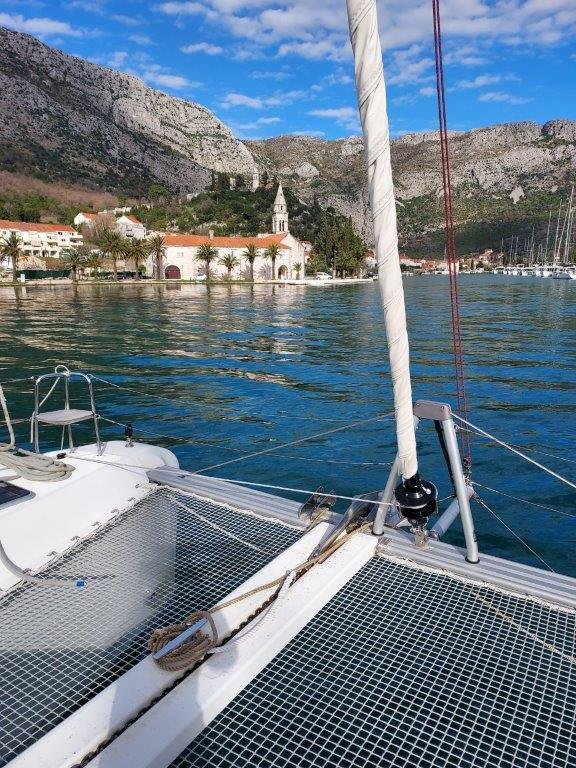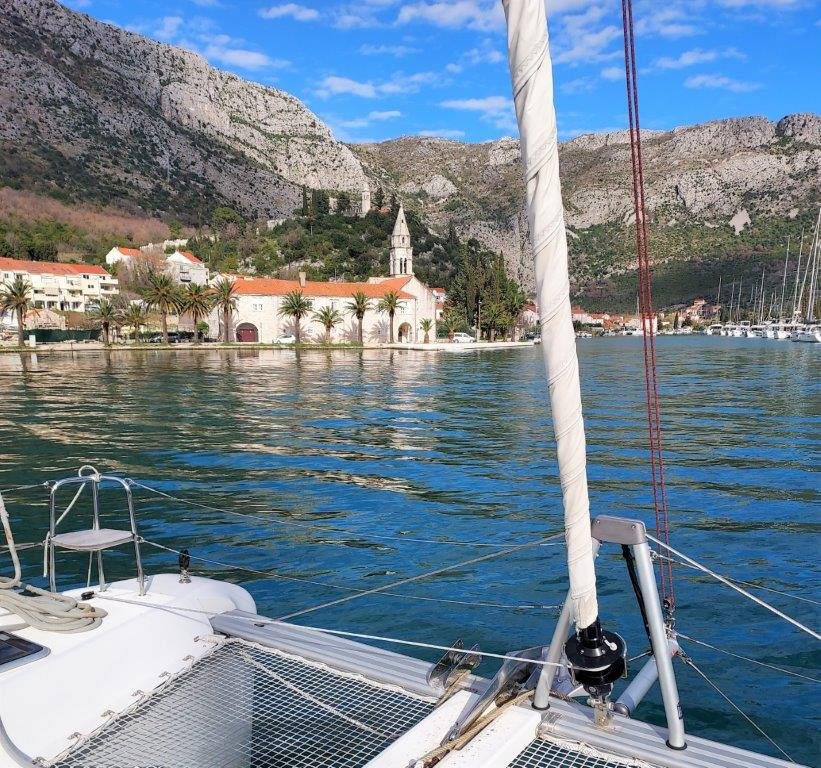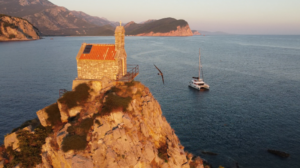We enjoyed Dubrovnik very much, also the harbor in Dubrovnik. We knew Dubrovnik is a well-known hub for sailors to come and go, from Greece or from Italy, to here but we were surprised to see so many nationalities in the harbor!

Only 1 hour sail away from Dubrovnik, in the Adriatic Sea, are the Elaphiti Islands. This archipelago, consisting of 13 small islands, with a total land area of around 30 square kilometers and a population of 850 inhabitants. Inhabitants are only on the 3 largest islands: Koločep, Lopud and Šipan. We visited all three islands.

The name of the Elaphiti Islands (in Croatian: Jelenski Otoci) comes from the ancient Greek word for Deer. Apparently, deer used to inhabit the islands in large numbers then. A roman author was the first to mention the islands by this name, published in his work in the 1st century.
In the last century, the Elaphiti Islands were a popular holiday spot for Dubrovnik’s elite. They built the most beautiful holiday homes and villas here, which still determine the street scene on these islands. Since then, not much has changed on the Elaphiti islands, luckily you will not find any large hotels, resorts or modern shopping streets.
Koločep
We started sailing for the first Elaphiti island, Koločep. Because of the Southwind, we sailed to the northern bay to be protected from the wind and the swell and this was also the main spot of Koločep. We noticed at the coastline of the bay, was a 40 meter long concrete pier, which we hoped we could tie our boat to (not too shallow water of sharp rocks below the surface), because it makes it easier for us to step on and off the boat (with our bikes).
Two locals helped us to attach our lines to the pier and they told us a ferry would come about 4 times a day in this period of year, but it was a small ferry, so there was enough room for both boats. The ferry is called ‘Postira’, a regular ferry service by state owned company Jadrolinija, which has the mission to make islands more easily accessible from the mainland.
It was really an idyllic place, we filmed the bay and our boat on the pier with our drone. The typical Mediterranean vegetation is clearly visible here: due to the many dry and warm days, there are many pines (so conifers instead of deciduous trees), palms, olive trees, stately cypresses and succulents are also common.
Koločep is the southernmost permanently inhabited Croatian island, in the Middle Ages it used to be an important shipbuilding site. For instance, 2 members of Christopher Columbus’ crew of the year 1492, were sailors from this island.
It was a very quiet and peaceful island with about 230 people living here. It has 7 pre-Romanesque churches dating from the 9th to the 11th century. When we were cycling, we saw a few of these old churches and also, what I consider, typical Slavic forms of images.

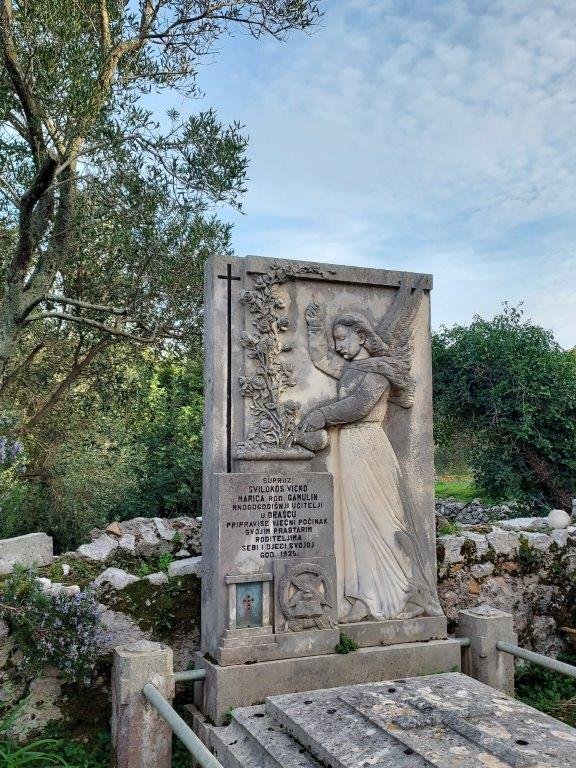
Still a lot of fishermen active on this island, lobsters are the main goal for fishermen on Koločep.

It was a couple of nice days on this quiet island. Because after our arrival in Dubrovnik, with a 20-hour night sail and all new impressions being in a new country, staying at this little island surrounded by nature was really relaxed. And because we were on the west side of the island, we were also treated to beautiful sunsets.
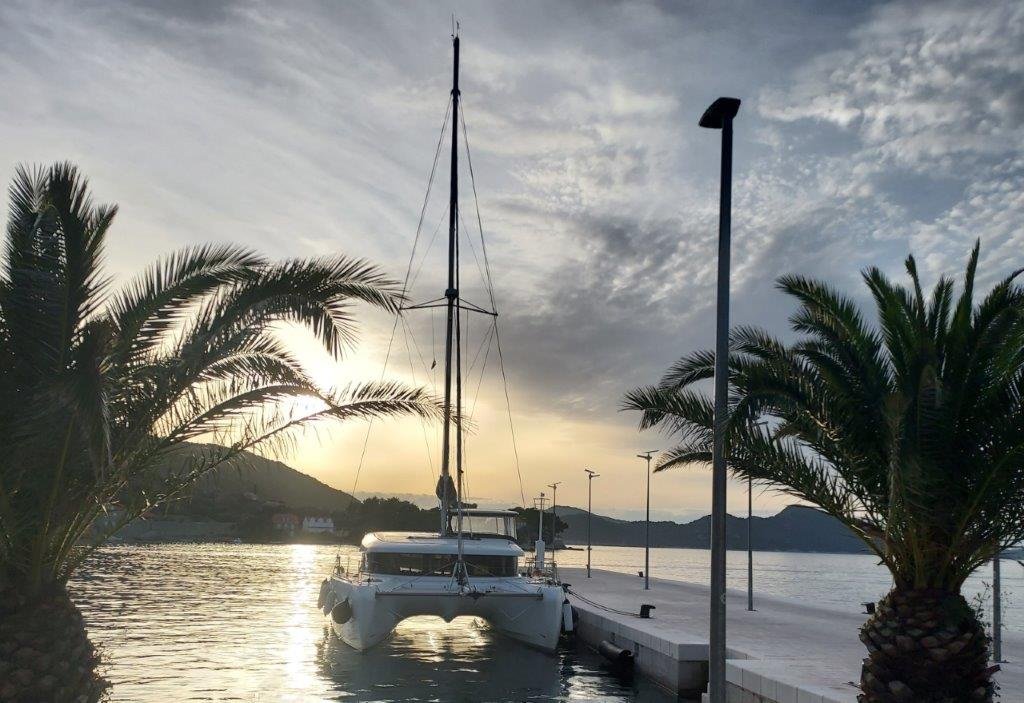
Lopud
Being on the westside of Koločep, we could already see the second island of the Elaphiti: Lopud. It is known as “the island in the middle” (Insula Media, or Mezzo). This island is bigger than Koločep and even has a small marina. But only small boats allowed, our catamaran couldn’t fit into the marina 😉. But we could stay at the outer concrete pier (again), which we were very happy with. The marina had no electricity and water, but it was already sunny in March, so we could use the sunpower that our solar panels picked up and the inverter turned into electricity. And the water is so clear in the Adriatic Sea, that we could also activate our watermaker to make fresh sweet water. Being really self-sufficient, which we like a lot.
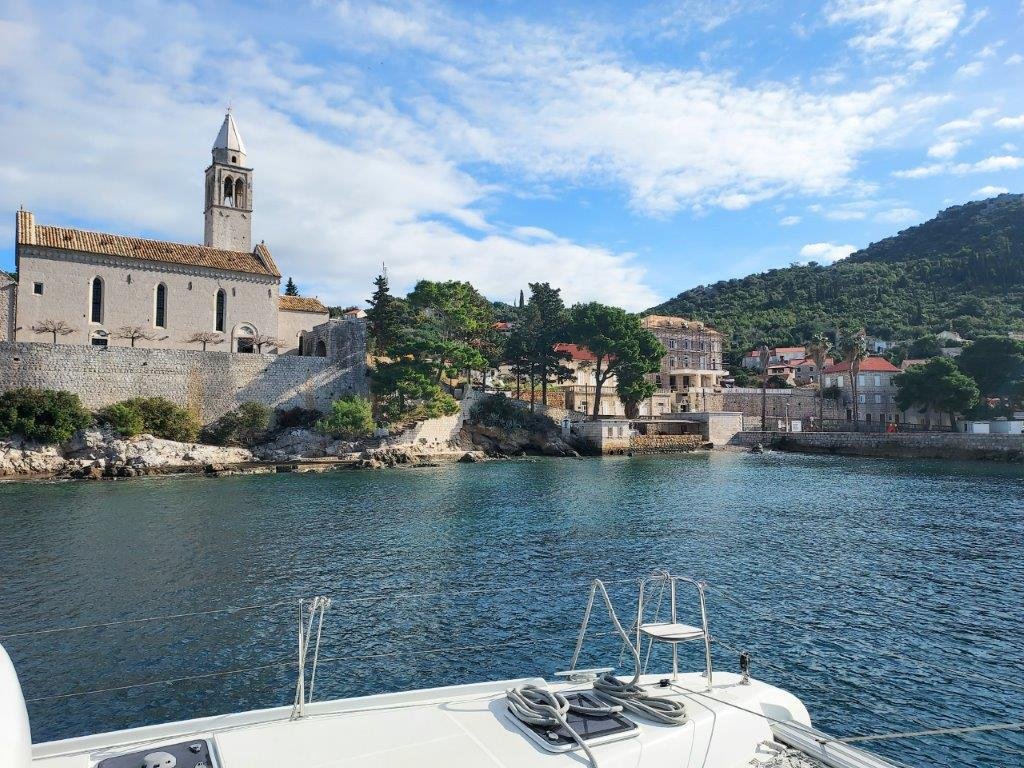
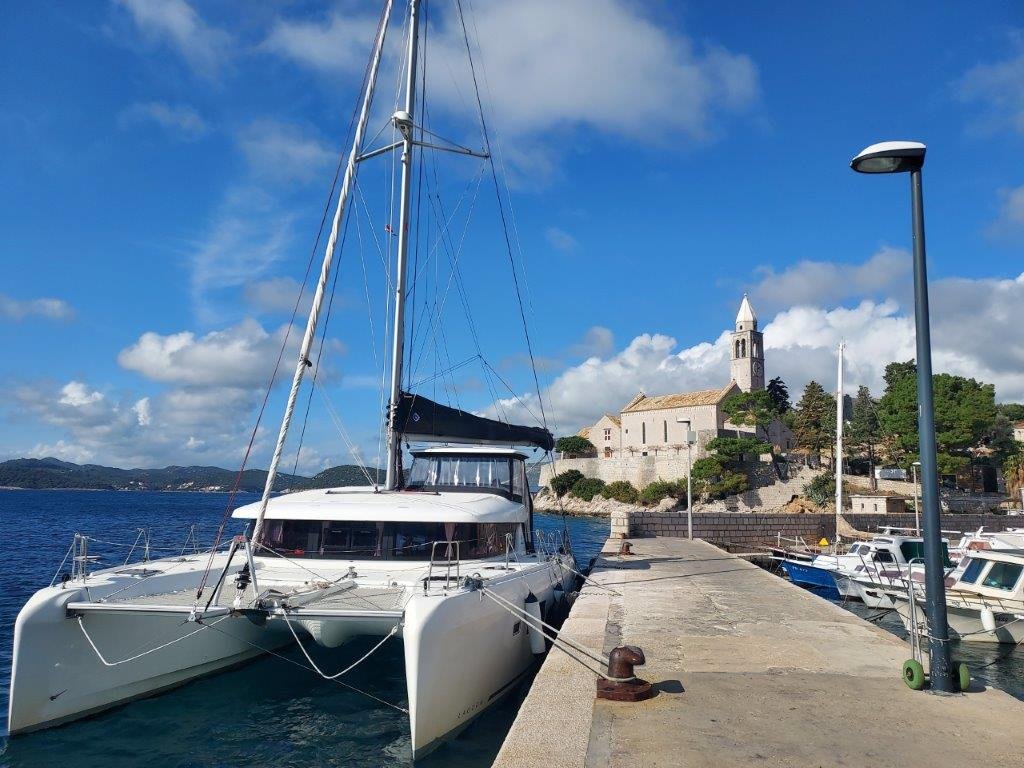
When we walked across the other side of this harbor, we noticed a nice little café. We hadn’t had a drink in a local Croatian pub since we arrived, so we sat down outside in the sun to drink a Croatian Beer (Gilles) and a Croatian white wine (Laura) which was called Pošip in this region. Sometimes we saw a golf cart passing by: Lopud is car free, so people use electric golf carts for ‘longer’ distances on the island.
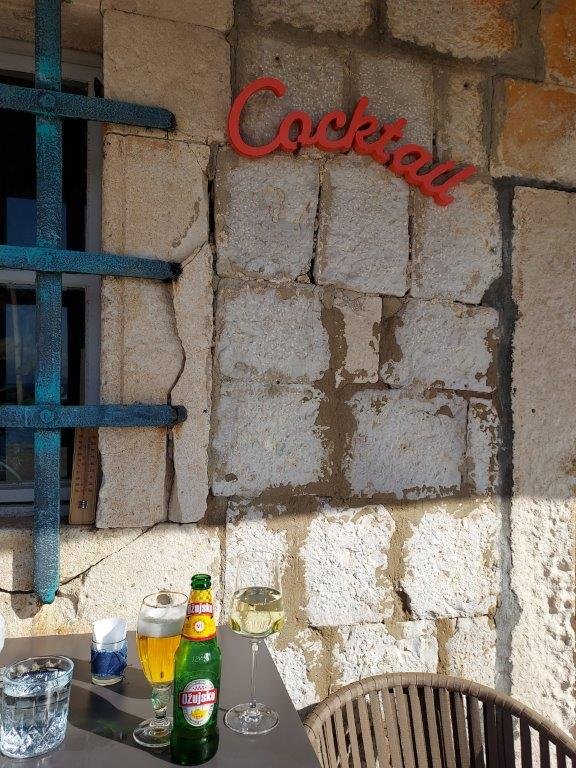
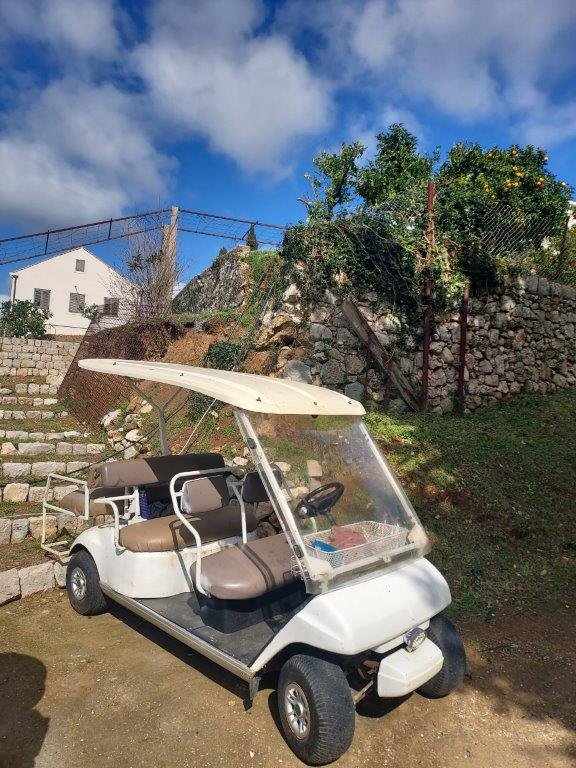
It was also at Lopud that the name Dalmatia came up: it is the region where we are now, and the name of one of the 4 regions of Croatia. Dalmatia is a long and narrow belt stretching all the way from Zadar to Dubrovnik in the south, and even into Montenegro further south. I only knew the name of another Croatian region, Istria which is in the north bordering Slovenia.
After finishing our drinks, we cycled further on the island of Lopud noticing that the clear waters surrounding the island changed from deep blue to turquoise aqua. It has to do with what this island is famous for: sandy beaches. Gilles took this picture of me below, and when you look at it, you feel like the picture has been taken at a beach at Costa Rica instead of an island in Croatia!

When we flew with the drone over Lopud, you could clearly see the large, long stretch of beaches in the bay.
It was very quiet on the island, in the summer months Lopud has about 400 inhabitants, in the winter many residents stay in Dubrovnik. And the funny thing is, winter period is from October to April, so when we were riding our bicycles in March, wearing our T-shirts, we smiled thinking about the fact that local people refer to this period as winter 😉.
Lopud is economically the most developed of the 3 Elaphiti Islands. The 15th and 16th centuries were the Golden Age for this island. Thanks to the prospering shipping industry, agriculture (olive groves) and sea trade (even with Americas!). The well-educated monks of the Franciscan (1483) and Dominican (1482) monasteries made way for literacy on the island. In addition to elementary school, the Dominican had the first three grades of high school in their curriculum. It is generally considered that the island’s seamen received the basic knowledge in navigation they were to use during their successful voyages. Places and mansions were erected. The names of Lopud streets, as well as its many houses and over thirty churches and chapels, tell stories of town of Lopud.
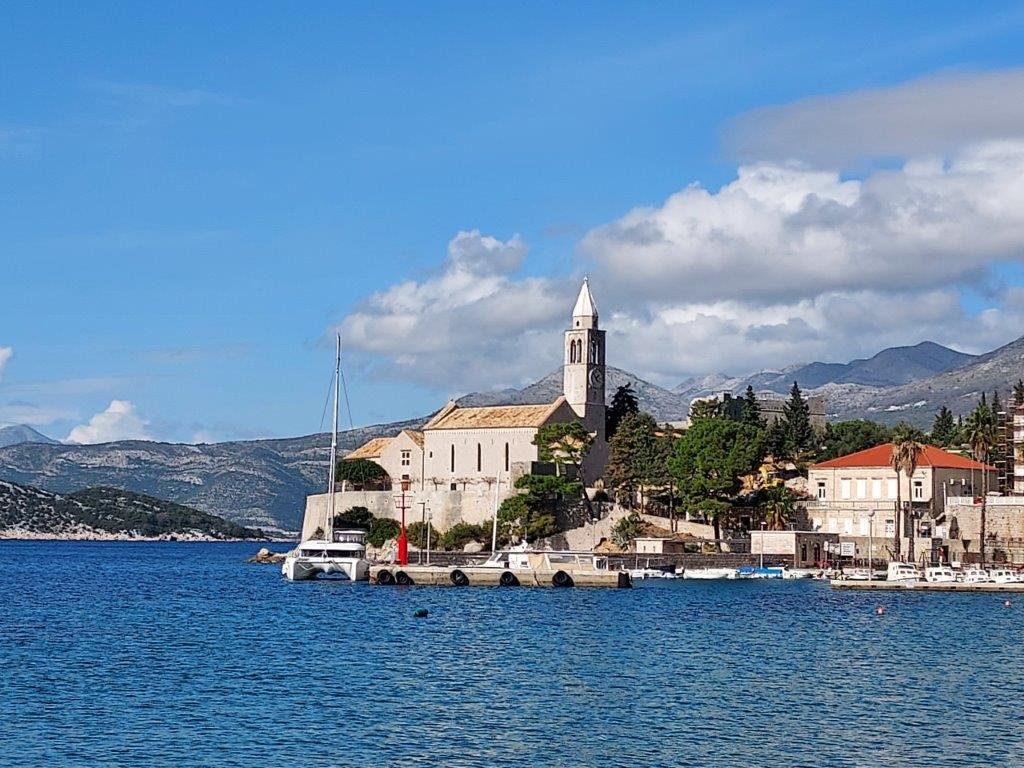
Conquest of Napoleon in 1808 brought an end to the monasteries’ activities.
From 1927, tourism made its mark and the island’s population enjoyed a safe and stable period.
However, after world war 2, all private owned hotels were confiscated and became state property.
During the aggression against the Republic of Croatia from 1991 to 1995 (Homeland War), business was operated in war conditions and enterprises going bankrupt as a consequence. The so-called privatization, the sell-off the hotels and real estate, as well as devastation, unemployment and job insecurity led to population decrease and young Lopud people had to look for life opportunities elsewhere. Despite the natural resources and potentiality of comfortable life, since 1992 Lopud has been passing the saddest period in its long history.
I find it always interesting to know the background of a place, so you have more understanding about the way it is known.

We said goodbye to beautiful Lopud and its glorious history and beautiful nature and sailed to island number 3: Šipan.
Šipan
Šipan, nicknamed the Golden Island, is the largest of the 3 islands of the Elaphiti archipelago.
We found a nice spot in a bay, again at a concrete pier! You can see typical Croatian houses in the background.
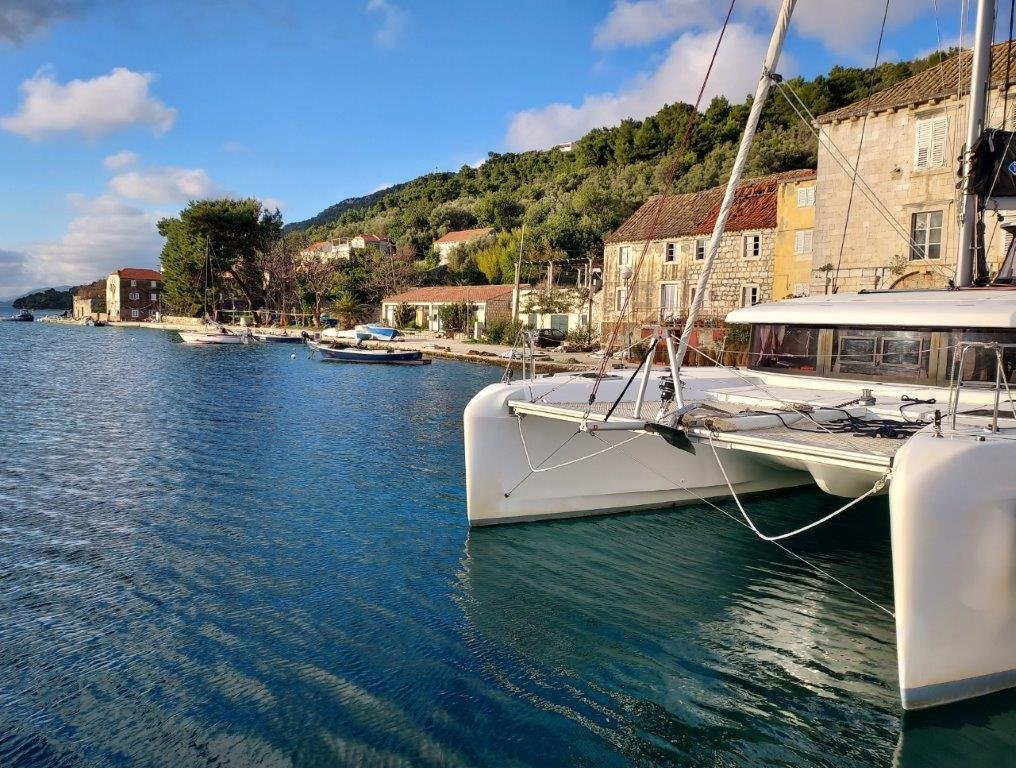
And on the other side of the pier, again about 4 times a day, a ferry comes to transport people and goods. We enjoyed seeing people walking on the pier, about 10 minutes before the ferry would arrive. So, we also knew: ‘Ah, the ferry is coming again!’ 😉. Mostly it was locals now, going to work or coming from work, maybe 1 or 2 tourists. The ferry in the morning also brought a baker with lots of bread on his back. In the end of the afternoon, citrus fruits (manly mandarins and oranges) were picked up by the ferry to take from the island, probably to be sold in supermarkets in Dubrovnik.

Šipanholds the Guinness World Record for the most olive trees relative to an island’s size and population. The island is quite hilly, but there is a valley in the middle, where you can cycle and enjoy the olive groves and wine yards, but they also grow figs and almonds here. We enjoyed cycling in the valley to the other side of the island, where there was a small marina.

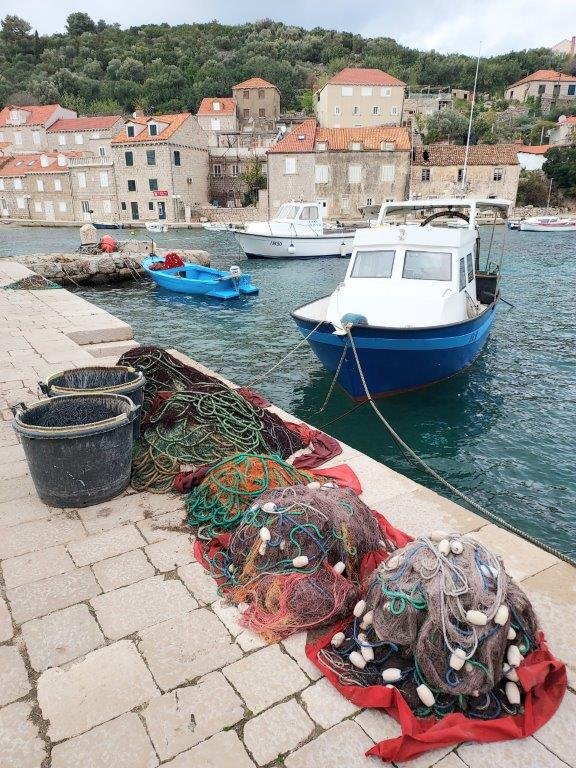
When we cycled back to the west part of the island where our catamaran was, we noticed this sign next to the road, “Attention: wild boars”. If you look closely, you’ll see the sign is riddled with bullet holes. Someone who thought he could also shoot cartoon wild boars 😉
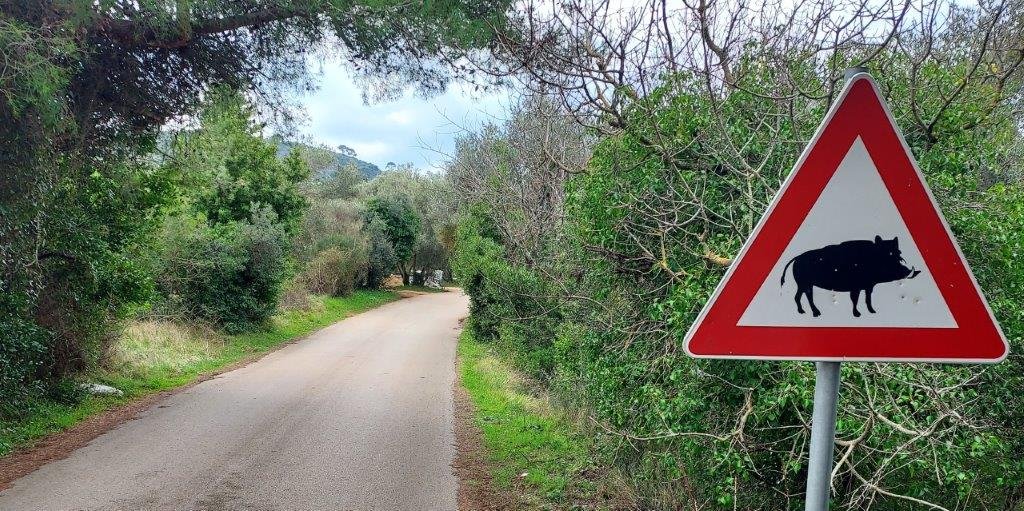
Slano
After the Elaphiti archipelago and a lot of anchoring (or staying at a pier), we decided to go into a larger harbor on the mainland. There we would have electricity and plenty of water to wash the boat and run our washing machine a couple of time.
I called a large harbor in Slano to ask for availability and prices and they told me it was € 205 for 1 night for a catamaran. In March! It turned out that Croatia is the country where the most charter boats come in the entire Mediterranean and this is reflected in the prices. If you have booked a week’s holiday on a charter boat, you may not think much about what a night in a port cost. But if you are going to travel around for years like us, you cannot spend 200 euros every day on a port. The lady heard my disappointment about the price in my voice and she said, very honestly: ‘We are a commercial port, next to us is a small Municipal port which is also open in the winter, there is enough space and cheaper.
We sailed to the municipal harbor in Slano and plugged our electricity cable into the box and filled up with water. But we didn’t see any harbor master. Not even the next day. We did some shopping in this nice little town. Funny to see in the supermarkets, although Croatian is very hard to read for Dutch people, some familiar words 😊:
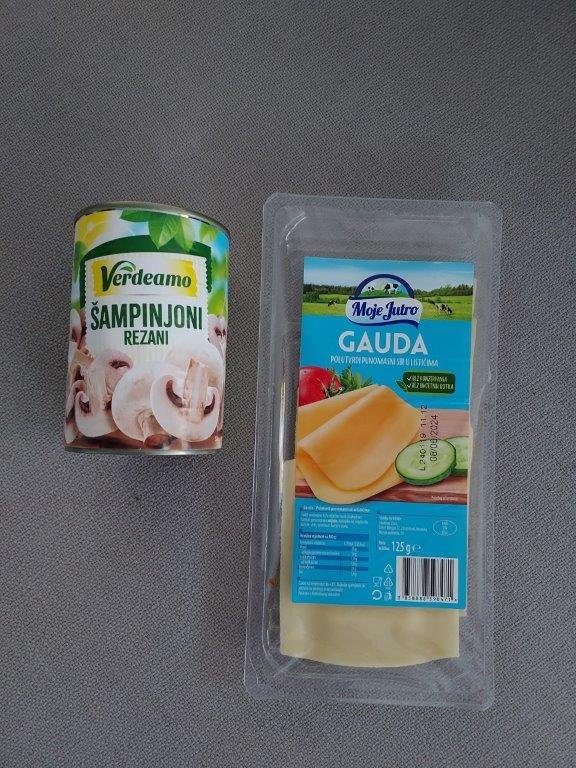

Also, the second evening, we went to one of the restaurants close to the harbor of Slano and ate great Croatian food. There was only 1 other table occupied so the waiter had all the time in the world to chat with us and gave us some great tips about Croatian islands and places to see. We noticed that the prices were also mentioned in their former currency, Kuna, because Croatians only have the Euro since 1 January 2023!
On the 3rd day in the harbor of Slano, a man came to look at our boat and he had an ‘official’ jacket on, so we asked him about the harbor. He very kindly said it was ok that we were here already for 2 days. The season hasn’t started yet (winter…) and they were short-staffed, so we could easily stay here without paying, he said. Very kind!


So Slano deserves a place in our blog, not only because of good memories of the relaxed atmosphere in the harbor, but also for the beautiful location with the high mountains in the background. These are the Dinaric Alps, stretching from the mainland of Italy all the way to Albania for 1.000 kilometers, being one of the most rugged and extensive mountainous areas of Europe.

Buying a new engine
The engine of our dinghy (9.9 hp), which we got when we bought our house in the Netherlands in 2018, it came with a small boat, is quite old and is performing less and less well. It does not always start, breaks down more often, etc.
And now that we know about the high prices of the harbors in Croatia (and this is not even summer or the most touristy are of Croatia which is in the North!), we probably will go anchoring a lot more and need our dinghy a lot more. An unreliable engine is not helping to have a smooth transition to land being in the middle of a bay anchoring 😉.
So, we looked for a Yamaha dealer in Croatia, luckily, about 30 minutes cycling from where out boat was, there was a shop. In stead of calling, we decided to cycle there and see the quality of the engines if they had any in stock and experience the service. The dealer was very well stocked, but only with new engines, they did not trade in old engines, because they did not really know what they were buying which I understood (fishing boats often have engines with many hours on them).
We asked for the price of a 20 hp (why not upgrade if you have the chance!) and it was about 25% cheaper than in the Netherlands. We ordered one and when it arrived, our kind contact person Nikša called us and we sailed into the fjord where their shop was.

We anchored the catamaran in front of the shop and rowed our dingy to the shore (broken engine, remember). The new engine was already on the quay (picture 1 below). With three men, they helped the new engine in our dinghy (2), and also renewed the cable for the fuel tank towards the new engine, because that was also quite old (3). Nikša (4) consulted with Gilles about some adjustments of the engine to make it to our wishes, we got the papers and guarantees and after 2 hours, we could test the new engine in the fjord, while getting back to our catamaran!
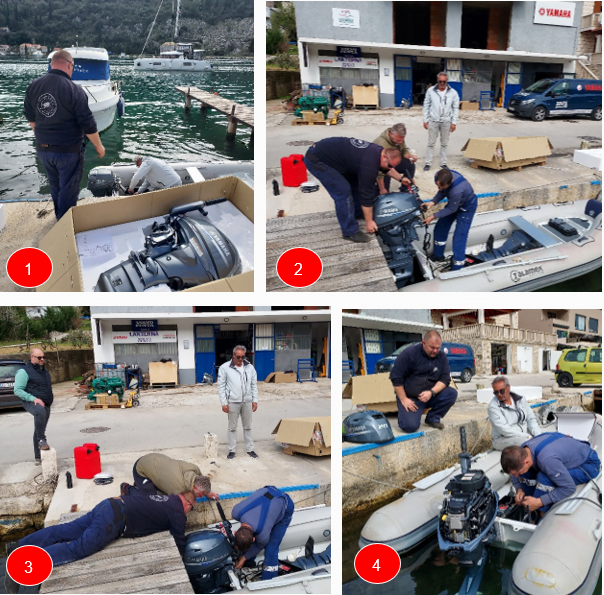
Happy with our new dependable ‘toy’ (double horsepower!), we sailed out of this lovely fjord again, on to the next island group in Croatia!
